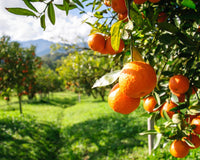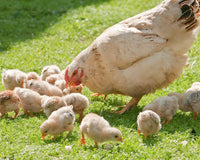Due to the response from our customers in the use of our products to improve their Food plots we have written this article.
Food plots serve two primary purposes for deer management: enhancing deer nutrition (nutrition plots) and increasing the chances of harvesting deer (harvest plots). While most people plant food plots to improve their chances of harvesting deer, which is a legitimate motive considering the need for population control, the more complex but equally important goal is to provide a consistent, high-quality nutritional source for deer.
Benefits of Food Plots
Nutrition and Attraction: Food plots attract and retain deer on your property by offering high-quality nutrition, essential for their growth and health. This is crucial for maintaining a robust deer population and supporting their dietary needs year-round.
Nutrient Provision: Deer require a variety of macro- and micro-nutrients, including protein, calcium, phosphorus, zinc, copper, and selenium. Properly designed nutrition plots provide these essential nutrients, contributing to the overall health and development of deer, particularly bucks and does, which have different nutritional needs and habitat preferences.
Optimal Deer Food Plots: Location and Cultivation
Location Selection: The effectiveness of a food plot depends significantly on its location. Key factors to consider include hunting strategies, accessibility, wind direction, and proximity to bedding areas. A well-placed food plot maximizes the chances of attracting deer while creating optimal hunting opportunities.
Plant Selection: Choosing the right plants is crucial for a successful food plot. A mix of annuals and perennials ensures a continuous food supply throughout the year. Popular choices include:
- Clover: A highly nutritious perennial with high protein content.

- Chicory: A drought-resistant perennial with deep taproots.
- Brassicas: Annuals like turnips and rape that provide high energy, especially in the late season.
- Soybeans and Grains: These annual crops offer a range of nutrition and are suitable for both cool and warm seasons.
Planting Timing: Plant cool-season crops like clover and brassicas in late summer or early fall, and warm-season crops like soybeans and grains in the spring to ensure year-round nutrition.
Maintaining and Maximizing Your Deer Food Plot
Regular Maintenance: Essential tasks include mowing to control plant height, weed control, fertilization, and crop rotation to prevent soil nutrient depletion. These practices keep the food plot healthy and productive.
Fertilization Strategy: The type of fertilizer and timing depend on several factors, including soil type, climate, and crop type.
Humax can be one of the first substances to add to your soil to help you grow the most nutrient-rich crops, thereby helping your deer reach their maximum genetic potential. Humax is a humic acid soil amendment that enhances the fertility of your soil, making nutrients more available to plants. It also improves soil moisture retention and serves as a carbon food source for soil microbes. The healthier the soil, the healthier the plants; the healthier the plants, the healthier the deer.
Key fertilization times include;
Early spring (high-nitrogen) Quick Green 30-0-0 a general purpose fertilizer designed for growing on poor soil. Its blend of immediate release and slow-release nitrogen helps minimize and prevent burning or yellowing of plants caused by high nitrogen application.
Mid-summer (high-potassium) Big K 0-0-50 is an organic fertilizer that provides a surge of potassium. Big K 0-0-50 is high in solubility and aids in the formation of sugars and starches adding sweetness to any plant. Additionally, Big K™ 0-0-50 is high in solubility and ideal for the final stage of plant growth.
Late fall (high phosphorus) Synergizer® 8-32-4 High phosphorus formulation with micronutrients. It contains Humax, a concentrated liquid humic acid, for better uptake of nutrients.
Phosgard Plus 0-32-25 contains both phosphate and phosphite for an immediate and long-lasting phosphorus supply. Phosphate is readily available to plants upon application, while phosphite converts over time to an available form providing a continuous phosphorus supply for optimum growth.

Types of Fertilizers:
- Organic Fertilizers: Made from natural materials like compost and manure, these slow-release nutrients prevent leaching.
AquaPower is a liquid fish formula made from hydrolyzed fish protein with high availability of nutrients. This provides readily available amounts of organic nitrogen, phosphorus, and potassium to growing plants.
Aqua Power™ contains 20 different amino acids, 13 vitamins, and 8 minerals including manganese, iron, copper, and zinc in trace amounts. The nutrients are available when applied as a foliar spray.
- Inorganic Fertilizers: Synthetic and fast-release, these provide quick nutrient availability.
- Foliar Fertilizers: Applied directly to plant leaves, effective throughout the year, especially in early morning or evening.
Conclusion
A well-planned food plot strategy involves selecting the right location, choosing appropriate plants, and maintaining the plot with regular care and proper fertilization. By understanding and implementing these strategies, you can create an optimal environment that attracts and sustains deer on your property, benefiting both the deer population and your hunting goals.






